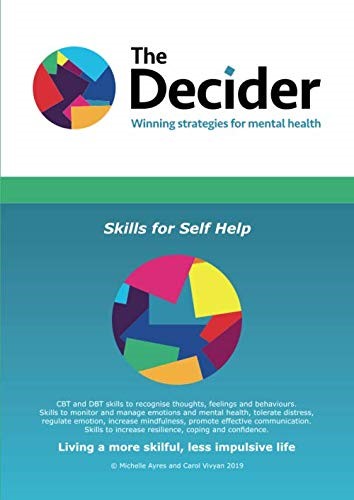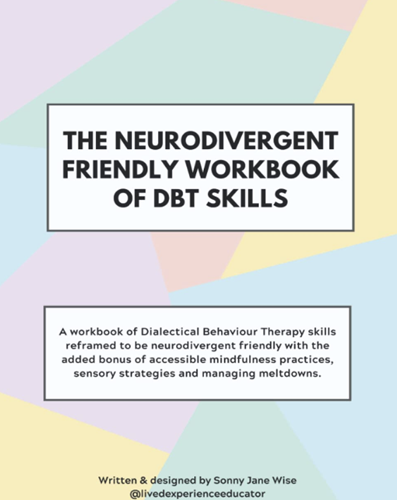Social Anxiety Self Help
Self help guide for Social Anxiety, using effective CBT strategies. Make sense of your anxiety, then learn how to make positive changes
Social Anxiety is an anxiety disorder where we believe that others will judge us negatively (e.g. "th ey'll think I'm an idiot"), and it is therefore experienced most acutely in situations when we are with other people.
ey'll think I'm an idiot"), and it is therefore experienced most acutely in situations when we are with other people.
Our attention is very self-focussed - on what we must look like to others, what they might be thinking of us, trying to interpret every glance or other unspoken gesture or expression and what it might say about what they think about us. We become 'mind-readers' and imagine that we can correctly assume what others are thinking about us.
Because we don't want to experience this anxiety (and its normal body responses), we tend to avoid situations where/when it might happen, and therefore are unlikely to learn that it could be ok and we could actually enjoy ourselves.
If we do have to go, then we use 'safety behaviours' to help us cope, such as trying not to be noticed, avoiding eye contact, holding or fiddling with something, trying to hide (e.g. sit in corner, hair over face), don't talk, and maybe have an escape plan (e.g. sit by door or in aisle, make excuse to leave early). This all increases the self-focus.
Cognitive Behaviour Therapy helps us learn to challenge the unhelpful thoughts and beliefs, learn to control our focus of attention, and change what we do.
Please read this page for information about anxiety and the normal body response.
Example of a vicious cycle of Social Anxiety
Social Anxiety Self Help Video
SELF HELP FOR SOCIAL ANXIETY
In order to break the vicious cycle of social anxiety, we need to change the way we think, and change what we do. Firstly, we can learn about how any anxiety affects our body:
- Read Alarming Adrenaline
Thinking Differently - Challenging Thoughts
If we can change the way we think about a situation, then we will not feel so anxious. We can learn to challenge those anxiety-provoking thoughts. Thoughts are not statements of fact. Don't believe everything you think!
- Learn more About Automatic Thoughts
- Learn Fact or Opinion skill
- Learn about The Mind Bully
What we believe deep down about ourselves, influences and distorts the way we think other people will think about us. Just because we think others think negatively about us, doesn't mean that is how it really is! We are looking at social situations, at other people and their judgement of us, through those very distorted lenses.
- Read: Different Perspectives
Learn to challenge the unhelpful and distorted thinking:
- Use the Vicious Cycle & Alternatives to map out your own thoughts, feeling and behaviours, and generate some healthier alternative thoughts and behaviours.
- Use this Social Anxiety Thought Record Sheet
- Thought Challenge Webpage
- The Court Case
- Practise STOPP skill
- Learn to use Positive Coping Statements
Thinking Differently: Re-Focus
When we're in a social situation with a group of people, our focus of attention becomes totally caught up in our own thoughts and feelings. We see everyone around us, but all we can think about is how they might be thinking critically about us! The adrenaline response of anxiety makes us feel terrible too, so we're thinking about how horrible that is, and how we just want to escape the situation.
It is very helpful to learn how to change our focus of attention and take more control over how we react to thoughts. We can learn to just notice the thoughts, acknowledge them, then let them pass. Notice the Mind Bully and let it go - turn your focus of attention to something else. First of all, you might learn to focus on your breathing.
Practise Mindful Breathing
Then you might learn and practise Mindfulness skills including Mindful Activity
Notice: Where my attention is.
Observe: What I'm doing. Think: "I am walking", "I am sitting",
"I am breathing", then notice those sensations in your body
Wise Mind: What now? How shall I continue? Doing or Being?
-
Choose an activity to do mindfully throughout the day, for one, two or five minutes. For example: Drink a cup of tea. Walk. Wash the dishes.
-
Whatever you are doing, be in that moment, right now. See, hear, smell, touch, feel, breathe.
-
Simply notice whenever other thoughts and sensations come to mind, then re-focus on your chosen mindful activity.
-
Be patient and compassionate with yourself.
-
Describe - rather than judge good or bad, pleasant or unpleasant.
-
It is as it is.
Everything Flows. Nothing is fixed. Heraclitus
See the Mindfulness page for more examples
Doing Differently
Our usual strategy for dealing with social anxiety, is to avoid social situations. However, that just serves to keep the social anxiety going because we never find out that we could cope and that we could enjoy ourselves.
Use Overcoming Avoidance to gradually face your fears
In the vicious cycle example diagram above, you will notice a list of what are called "safety behaviours" that we might use when we feel anxious in a social situation. It's helpful to identify what you do in those situations, such as: plan your exit (book a taxi), sit in a corner (to hide), sit on the end (to allow quick exit), check where the exits or toilets are, fiddle with something, drink more, not talk, avoid eye contact and so on.
Slowly, we can change what we do. Use the Avoidance Worksheet and identify some healthy coping strategies to use in those situations, and gradually, reduce and stop those safety behaviours. So part of your list of feared situations might be changing where you sit, who you sit by, not booking a taxi etc.
It's important that you see the situations through - stick with the anxiety - it will pass.
FACE Fear And Avoidance - VIDEO
You can use STOPP skill to include many strategies:
STOP - just pause for a moment
Take a breath - one slow deep breath
Observe - there's the mind bully again. My body and mind is reacting to the thoughts that others might be critical and I feel anxious.
Pull back - this is just the anxiety talking. Don't believe everything you think! Let's stick with the facts - these thoughts are just opinions (Fact or Opinion). I don't have to react right now. There's another explanation for this...(there is no evidence that others are thinking critically of me, my friends wouldn't invite me if they didn't want me there, others won't even notice me etc) What's the bigger picture?
Practise / Proceed - What can I do right now? I can use these strategies:
Where can I put my focus of attention right now? (Mindfulness & Mindful Activity). What else can I do that would help me tolerate these thoughts and feelings without reacting to them?
Complete your own STOPP Worksheet PDF or STOPP webpage
Learn effective skills online - The Decider Skills for Self Help online course
SUCCESSFUL SOCIAL SITUATIONS mp3
(Overcoming Shyness & Social Anxiety)
Female voice, with music.
SUCCESSFUL SOCIAL SITUATIONS mp3
(Overcoming Shyness & Social Anxiety)
Male voice, with music.

THE MIND BULLY mp3
(for dealing with intrusive / distressing thoughts)
Female voice, with music.
CONFIDENT & COMPETENT mp3
(for low self-esteem and self-critical thoughts)
Female voice, with music.
CONFIDENT & COMPETENT mp3
(for low self-esteem and self-critical thoughts)
Male voice, with music.
![]()
Other Anxiety Self Help Resources
- Practise Mindful Breathing
- Practise STOPP
- Read Fact or Opinion
- Read About Automatic Thoughts
- Practise completing the Vicious Cycle & Alternatives PDF
- Work your way through the 7 Step CBT Self Help Course: substitute the Social Anxiety Thought Record Sheet PDF for the generic Thought Record/Challenge Sheet
- Self Help Videos
- The Worry Tree
- Anxiety Quick Reference PDF
- Exposure Homework Sheet PDF
- Accepting Anxiety PDF
- Use The Self Help MP3s
Self Help Books
Overcoming Social Anxiety & Shyness
Overcoming Social Anxiety And Shyness Self-help Course
The Shyness & Social Anxiety Workbook
Useful links
- Practise Mindful Breathing
- Practise STOPP
- Read Fact or Opinion
- Read About Automatic Thoughts
- Practise completing the Vicious Cycle & Alternatives PDF
- Work your way through the 7 Step CBT Self Help Course: substitute the Social Anxiety Thought Record Sheet PDF for the generic Thought Record/Challenge Sheet
- Self Help Videos
- The Worry Tree
- Anxiety Quick Reference PDF
- Exposure Homework Sheet PDF
- Accepting Anxiety PDF
- Use The Self Help MP3s
Audio downloads
SUCCESSFUL SOCIAL SITUATIONS mp3
(Overcoming Shyness & Social Anxiety)
Female voice, with music.
SUCCESSFUL SOCIAL SITUATIONS mp3
(Overcoming Shyness & Social Anxiety)
Male voice, with music.

THE MIND BULLY mp3
(for dealing with intrusive / distressing thoughts)
Female voice, with music.
CONFIDENT & COMPETENT mp3
(for low self-esteem and self-critical thoughts)
Female voice, with music.
CONFIDENT & COMPETENT mp3
(for low self-esteem and self-critical thoughts)
Male voice, with music.
![]()


























